Review of the Black and White Houses Tour of Singapore
“The exotic Black and White houses of Singapore are a singular architectural style found nowhere else in the world. Combining Anglo-Indian features with the English Arts and Crafts movement, these white-painted bungalows with black trim detailing were ingeniously designed for tropical climes. Originally built to house well-to-do colonial families, they are now extremely coveted and available only to the crazy-rich ($40 million for starters, and you might have to wait several decades for a whole family to die).”
– from Crazy Rich Asians (part 3, chapter 2) – by Kevin Kwan
The moment I read this description of these Black and White houses in Kevin Kwan’s very popular book, Crazy Rich Asians, I was intrigued. As someone who’s into history and architecture, I just had to know more about Black and Whites. I couldn’t find much about them online, but I did come across a tour of these exotic houses through a well-respected tour company, Jane’s Tours. Luckily, one of their bi-weekly tours coincided with my trip to Singapore and luckier still, there were spots available on this very popular tour.
Although the tour sounded like a great way to explore Singapore’s history and heritage, the price tag was a mighty steep S$100 (US$74 / €65 / £55). I wondered whether the tour was worth it? In the end, I decided to fork over the money. Why not, I thought? For starters, I’d never been in a $40 million house before that as Kevin Kwan described was “extremely coveted and available only to the crazy-rich.” And second, it sounded like a great opportunity to see an off-the-beaten part of Singapore.
Read the rest of this post to find out whether it was worth it or whether I blew my money.
Looking for an itinerary full of history and culture, check out my 5-Day Singapore Itinerary post.
The tour was not sponsored or paid for by Jane’s Tours or anyone else. The people on the tour were given permission by the occupants to take photos of and publish the interior of two of the three houses and the exterior of all three houses as long as their addresses weren’t revealed.
Disclosure: This post may contain affiliate links. As an Amazon Associate and a Bookshop.org Associate, I earn from qualifying purchases. Please see this website's Disclosure for more info.
Black and White Tour
Tour Company: Jane’s Tours
Cost: S$95 + S$4.21 transaction fee = S$99.21 (US$74 / €65 / £55)
Time: 9:00 am – 1:15 pm
Guide: Catalina
Transportation: an air-conditioned minibus with driver
Features of the tour: 3 Black and White Houses, St. George’s Church, and several other interesting landmarks in the Dempsey Park and Tyersall Park areas.
What are Black and White Houses?
Black and White Houses were built from 1898 to 1941 by the British colonial government to house their high ranking military officers and civil servants.
The houses are called Black and Whites because of their white-washed exterior walls and black wooden beams or trim.
What I love about these houses is that they are a fusion of three different cultures: Indian, Malay, and English.
Indian: You can see the Indian influence in the white-washed walls. This white coating was invented by the Indians in Madras. It reflects the sunlight, keeping the structures cool, making it very suitable for the steamy weather of Singapore. The veranda that wraps around the top floor and the high-pitched roof both derive from Indian architecture. These features allow a breeze to blow through from one end of the house to another, thus lowering the temperature inside.
Malay: You can see Malay features in the fact that the bungalows are built on pillars to keep the wildlife like snakes out of the house and to keep the interior from flooding.
English: The dark wooden beams and trim on the second level come from mock British Tudor architectural style.
When Britain left Singapore in 1956, they sold the Black and White Houses to the Singapore government for $1 each. The houses are now managed by the Singapore Land Authority. There are currently 500 Black and White Houses in Singapore left, down from thousands when Singapore was a British colony.
The houses have conservation status meaning that they are protected from being torn down but if the Singaporean government needs the land, they can demolish them. If they had preservation status, then the government could not tear them down for any reason.
Not only are there houses, but there are also Black and White apartment buildings. The houses come in various styles reflecting the department or office in the British government that originally built them. Some houses even come in an art deco style.
The Singapore government rents the houses out. Contrary to what Kevin Kwan wrote, it’s rare that any of these houses are actually owned by anyone. They are also not popular with Singaporeans, who prefer to own rather than rent. Western expats are the ones who like to rent them.
You can find these houses throughout the island. But they are generally found in clusters far from the center of downtown Singapore. When the British first built them, the government would house all of the people working in the same department or organization together in the same neighborhood. Everyone from the military would live in the same area of the island, while all of the people working in the hospitals would live in another neighborhood.
RELATED POST: What's the Best Food Tour in Singapore?
What I saw on the tour
1. Meeting Point
My tour took place on a Saturday starting at 9:00 am and ending at 1:00 pm. I was to meet the tour group at Huber’s Butchery and Bistro on 22 Dempsey Road at 8:50 am. Because there wasn’t a convenient way for me to get to the meeting point, I took a Grab (like Uber but you can pay the driver in cash directly at the end of the drive) from my accommodations in Chinatown at 8:30 am. The Grab cost S$9 (US$7).
2. Our Guide
Our group’s guide was Catalina, and I can say that I was not disappointed. She was a terrific storyteller. She was a treasure trove of information about the houses and Singapore’s history.
3. The Tour Group
There were twelve people on the tour. I did feel out-of-place a bit. I believe I was the only “tourist” in the group. Everyone else seemed to be foreigners living in Singapore with cushy jobs (the tour was not cheap). I think some of them were using the tour to see if they were going to rent one of the houses. I sort of just stuck to myself, taking photos, listening to Catalina, and writing in my journal. However, not connecting with anyone did not bother me at all as I was so enthralled with what I was seeing and what Catalina was telling us.
4. Dempsey Hill – Saint George’s Church and the old British army barracks
We spent the first part of the tour not actually visiting any Black and White houses, but instead getting a bit of history of the British in Singapore and the history of the Black and White houses. It was all very fascinating.
Our tour started in the Dempsey Hill area. In colonial times, this area was where many of the officers and soldiers lived. The officers lived in the Black and White houses, while the soldiers lived in army barracks.
The former army barracks have now been turned into trendy shops and cafes.
Now Dempsey Hill is filled with expensive houses situated along narrow winding roads. Unlike other areas of Singapore, there are no tall public housing high rises here. There’s a lot of trees and vegetation like being in a “green oasis.” I never would have made it to this area if I hadn’t been on this tour.
Our first stop was at the Saint George’s Church from the British colonial area.
What stood out for me about the church were the high ceilings and the open arched windows. The glassless windows allowed air to flow through, thereby cooling the church down. St. George ’s was just what I imagined a British colonial church to look like. Standing there, I could feel that I was back in some 1930s British novel set in the colonies (as long as I didn’t look up at the electric fans).
After the church, we drove along a narrow-forested road that if we had been in the movie, Crazy Rich Asians, it would have led us to Tyersall House, which is the estate of Nick’s grandmother. Our guide pointed out a few important historical landmarks in the area.
5. Singapore Botanic Gardens
Our guide pointed out on the right side the famous Singapore Botanic Gardens.
6. Istana Woodneuk
Opposite the Botanic Gardens was Istana Woodneuk, the property of the Sultan of Johor, one of nine sultans in Malaysia. Sultans are a bit like the royal family in England. They’re rich but powerless figureheads.
The property is worth US$3.5 billion! I’m sure you’re thinking that the house on this property must be very grand. You’re wrong! It’s supposedly just the ruins of a palace. The grounds are completely off limits. According to my guide, a few years ago, though, ghost hunters visited the ruins. I’m not sure if they found any ghosts. We couldn’t see anything because the property was surrounded by vegetation.
7. Atbara House
The next place that Catalina drew our attention to was Atbara House, the first black and white house. It was built in 1898 by John Bidwell. It also used to be the former French embassy. Unfortunately, it was behind a fence, so we couldn’t see it very well.
8. House #1
The first house was in the Mount Faber area of Singapore. The bungalows in the Faber area were originally built for harbor employees.
Our first house was occupied by an interior designer and her family and not someone like the characters in Crazy Rich Asians. It was a very traditional Black and White house with mock Tudor dark wood beams on the second floor and the portico over the entrance.
This room was probably my favorite in the whole house. It was so warm and inviting. I loved the beams on the ceiling and the alcove with the window jutting out between the two bookshelves. If I spent my money on possessions rather than travel, this is how I would like to decorate my living room.
Interested in renting one of these houses?
To do so, you need to bid on them. Rent ranges from S$2,000 to S$25,000 (US$1,477-US$18,500 / €1,300-€16,239 / £1,116-£14,000) per month. Expensive? Yes. But crazy-rich expensive? No. My rent in California is more than the least expensive Black and White. You can only rent them for a certain number of years (I think it’s 3 years), and then you have to reapply to continue your lease. Catalina told us that it’s rare that the lease isn’t extended.
The Singapore Land Authority owns the majority of these houses. They hire three or four management companies to manage the properties. If renters have a problem like something breaks, they can call the management companies to fix it.
Everyone’s always curious about what the bathrooms look like. I have to say that the bathroom probably had the most beautiful tile I’d ever seen. If you’ve been to Singapore, you’ll recognize them as typical Singaporean tile found on the sides of buildings.
The occupants are not allowed to change the exterior of the house. However, they can modernize and redecorate the interior anyway they want. But they need to pay for it. Is it worth it when you’ll never own it and you’ll eventually end up going back home to your country?
All of the houses we toured had their upper floors remodeled so that the veranda no longer wrapped around the whole house. They also put in glass in the windows.
In colonial times, there would have been a veranda in these two very colorful rooms. The blue room was my second favorite room in the house. There were three or four bedrooms on the second floor.
In colonial times, the kitchen and servants’ quarters would have been in another building as you can see in this picture. This house still had its kitchen in a separate building with a pantry in the main house.
Although the tenants can’t change the exterior of the house, they can change the landscape like putting in a pool. However, they would have to pay for it themselves.
What did I think of the tour so far?
It was different than what I expected. The first tenant was not some stuck-up crazy rich person like Kevin Kwan suggested. She was very welcoming and down-to-earth. She answered our questions and graciously let us freely roam around and take pictures of her house. We could use her bathroom if necessary as well.
As I was walking through the house, I forgot about its history and heritage and just marveled at the architecture and the interior design, imaging myself living in it.
Could you see yourself living in this house?
9. House #2
I think I found my dream home in the second house. The house was in the Alexandra Park area of Singapore, quite a ways from the first house. It was a wonderful opportunity to get to see parts of Singapore that the average tourist doesn’t usually get to see.
The houses in Alexandra Park were originally owned by the military. According to Catalina, they have a more masculine appearance than other houses. There’s no mock Tudor style here. There aren’t the curves or the wooden beams on the second floor like in the first house.
However, this house is similar to the first house in that they both have a portico. The second house, though, has turned it into the perfect outdoor sitting area.
This is the foyer of the second house. You can tell that I took the tour during the Christmas season. Unlike the first home, the tenants in this house were not around, but like the first one, we were allowed to roam freely around the house taking photos and using the toilet if need be.
This room was just off the foyer. You can see that there is an air conditioner in this room, but when we were touring the windows were open. And there were no screens on the windows! What about mosquitoes? Our tour guide and the occupants of the first and third houses mentioned that there were indeed a lot of mosquitoes. Most people fumigate the property to reduce their number.
My favorite room was the one above the portico. I loved how the walls were covered with windows. It made the rooms so bright and sunny. This one was especially lovely. If I ever built my own house, I’d definitely add a room just like this.
This house was decorated completely in white. It made the house look so clean and bright. Honestly, I thought I was in Architectural Digest. I don’t think I’d ever been in houses this amazing before.
Unlike the first house, the kitchen was inside the main house. And of course, it was completely in white. How do they keep this house so clean?
I thought it was very gracious of the people to open up their houses to tour groups. I wondered if Jane’s Tours
There is actually a coffee table book called Black and White: The Singapore House 1898 – 1941 by Julian Davison. On Amazon, it’s a crazy price of $98, but on the tour, Catalina was selling them for a lot less. The books were kept at this house, so I suspected that the second house could have been that of someone related to the publishing of the book. Julian Davison? Just my guess.
RELATED POST: How to Save Money in Singapore
10. House #3
For the third house, we got to tour the interior, but we were not allowed to take photos. The tenant provided us with snacks and refreshments.
This house was different from the first two in one big way. All of the rooms were on the second floor. The first floor only contained the foyer with a beautiful winding staircase, a work room for the occupant’s pottery making and a garage on one side of the foyer, and then a completely empty space on the other side of the foyer.
As I said, all of the rooms including the kitchen, dining room, and bedrooms were all on the second floor. This more easily keeps the snakes and other wildlife out of the living area.
This was the largest and grandest of the three houses. I also felt like I was walking through Architectural Digest.
It was all in white like the second house. The occupants, though, in this house had all the windows closed and the air conditioner on. It was also more masculine than the other two—leather couches and a chandelier made of antlers.
Singaporeans don’t like to live in the Black and White houses for a number of reasons. First, they prefer to own. Home ownership is something like 90% in Singapore. Second, the houses require a lot of upkeep. There are problems with mold. There are problems with snakes and other creatures. Mosquitoes are an annoyance because the houses are in the tropics and surrounded by nature. There are often no neighbors nearby. There isn’t any public transportation or stores close by either.
Conclusion
Now I know how I would spend my money if I ever won the lottery. I’d move to Singapore and rent one of these houses and use it as a base as I traveled around the world. They are exotic and beautiful houses filled with character and history. British tropical.
Would I recommend this tour despite its price tag? Definitely. I loved it. I got to see a part of Singapore that I never would have seen before. I got to explore a part of Singapore’s history and heritage that your average tourist doesn’t get to do, thus learning more about this fascinating country and about British colonial history.
The homes we saw, though, weren’t $40 million homes. Perhaps a few million but not forty.
Did I feel like I was in 1930s Singapore? From the outside yes. From the inside no. They had been too modernized to get a sense of history. They were still unique houses, though. And I fulfilled my curiosity about them.
Catalina was probably one of the best guides I’ve had—so professional, knowledgeable, and enthusiastic.
Great Books on Singapore and Black and White Houses
Pin it for Later
Looking for more info on Malaysia and Singapore?
- How to travel from Singapore to Malaysia by Bus
- An Unforgettable 2-Day Melaka Itinerary
- Penang Itinerary: 3 Days of Street Art and Night Markets
- 15 Best Books about Malaysia: Read Before You Go!
- Singapore Itinerary: How to Spend 5 Days in Singapore
- How to Save Money in Singapore
- 30 Awesome Books About Singapore
- Hello Singapore Food Tour - Unbiased and Honest Review
- Review of Black and White Houses Tour
What do you think of these houses? Would you ever live in one? Are you planning on taking a trip to Singapore? Have you ever been on a Black and White tour?

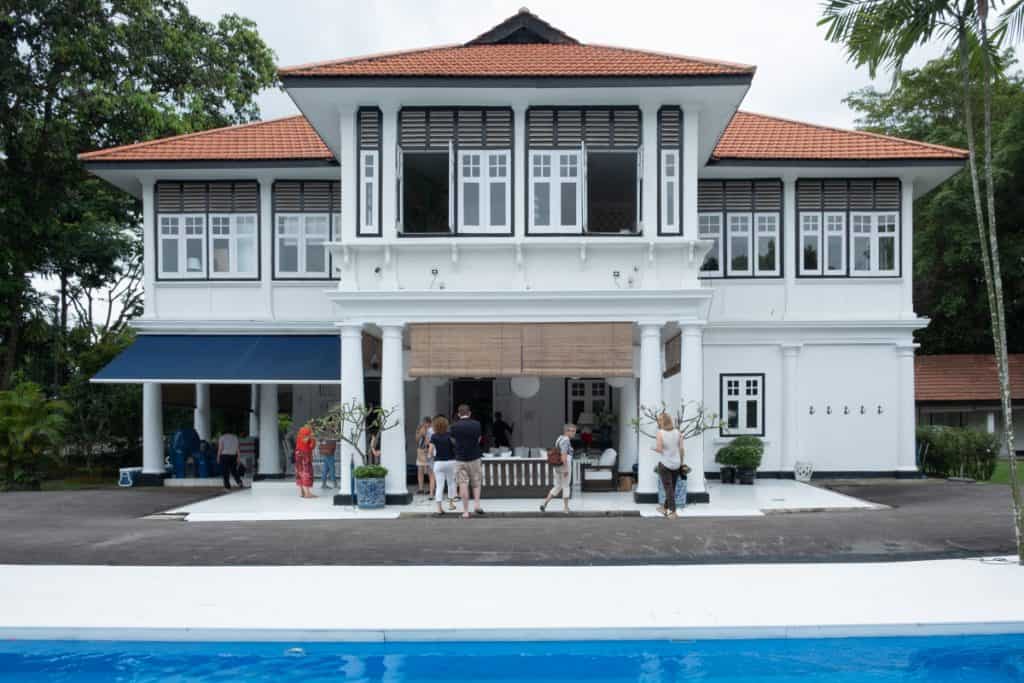
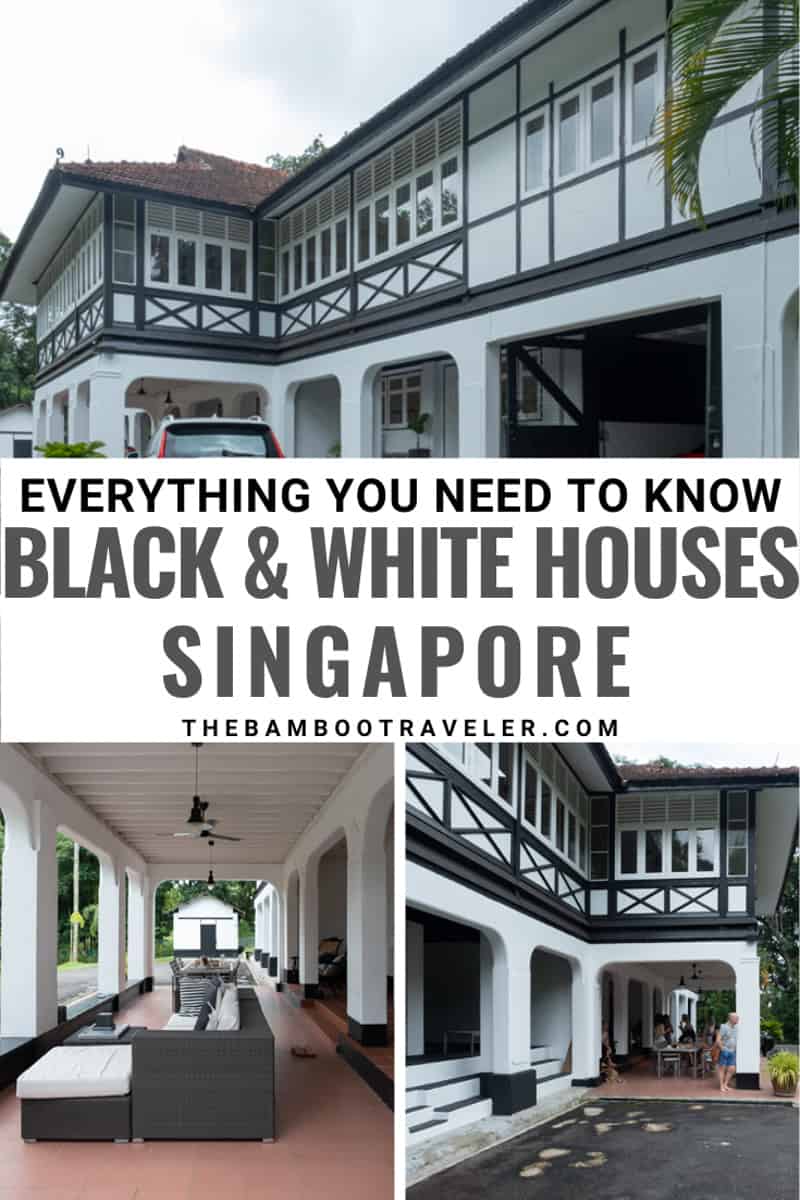
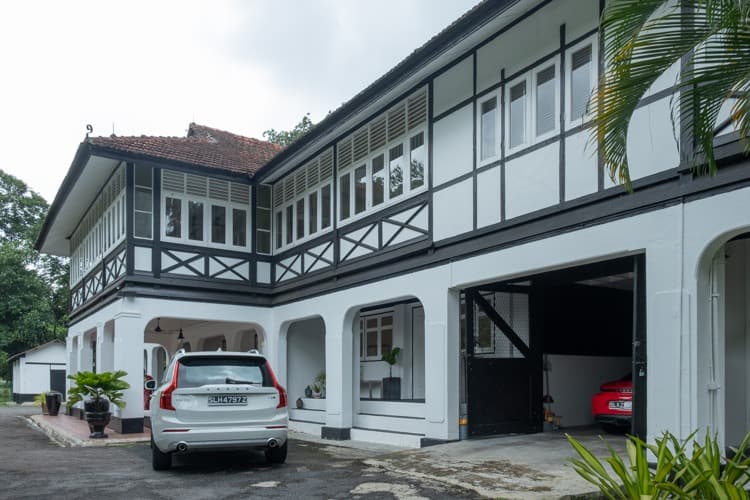
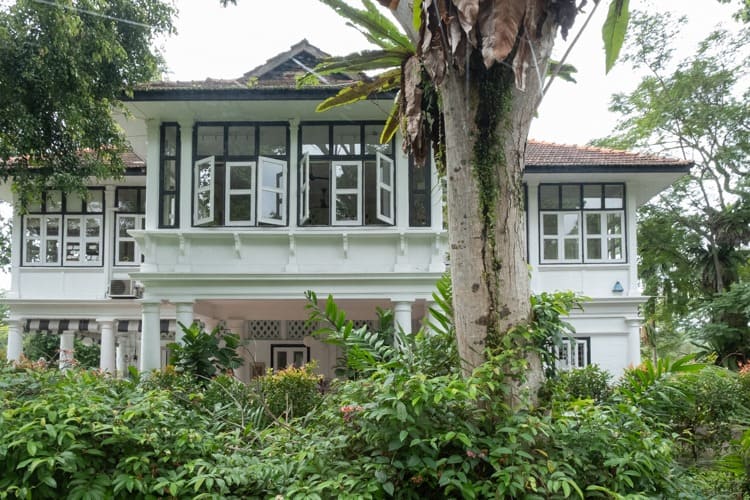

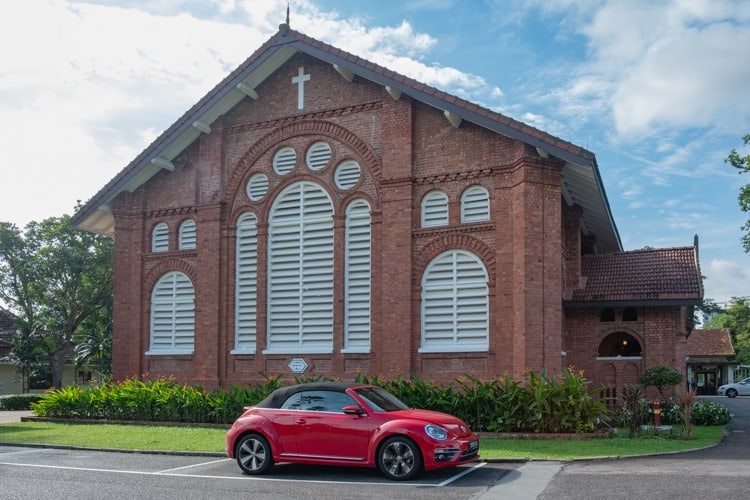

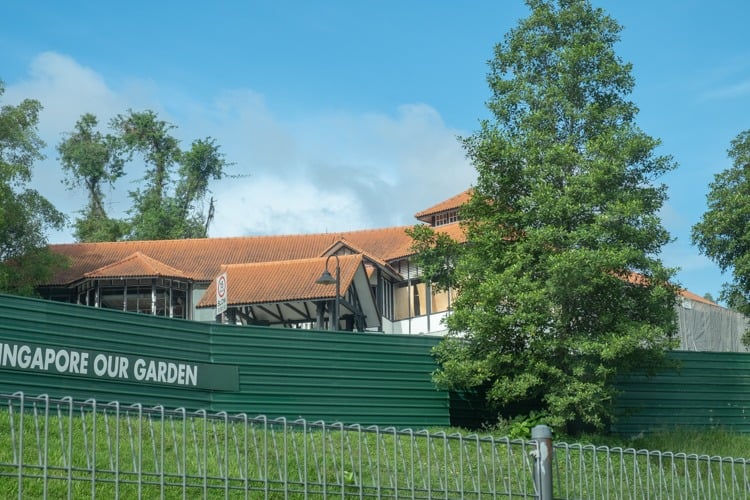

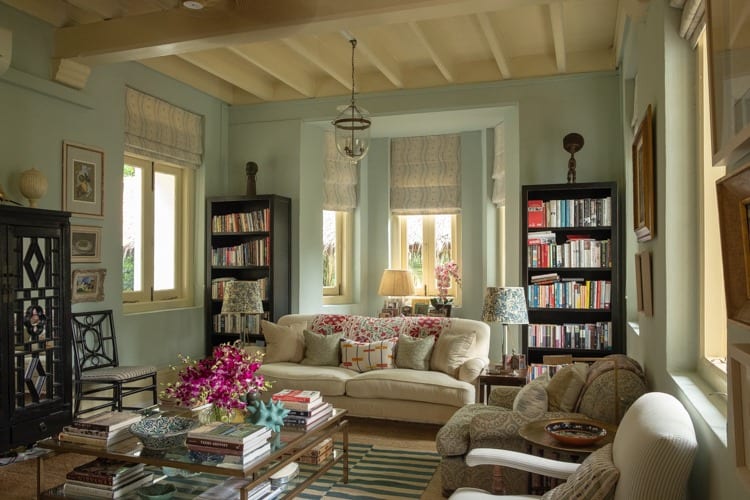
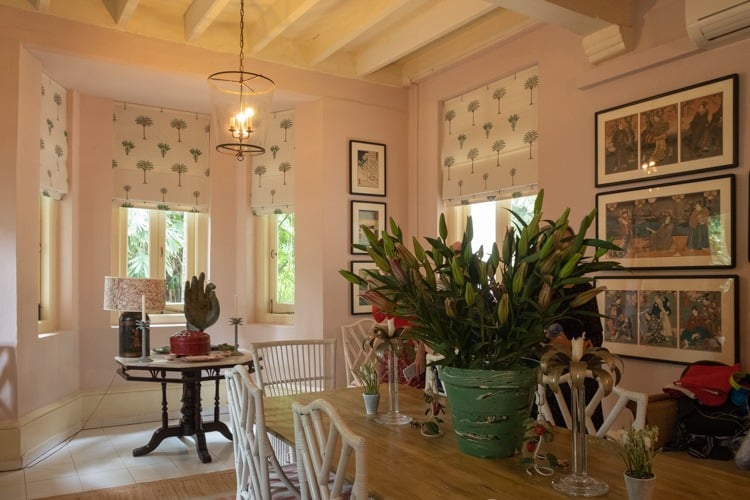
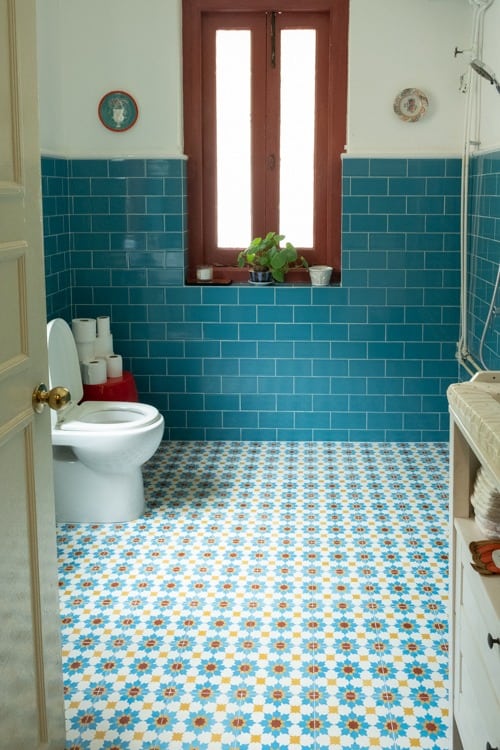

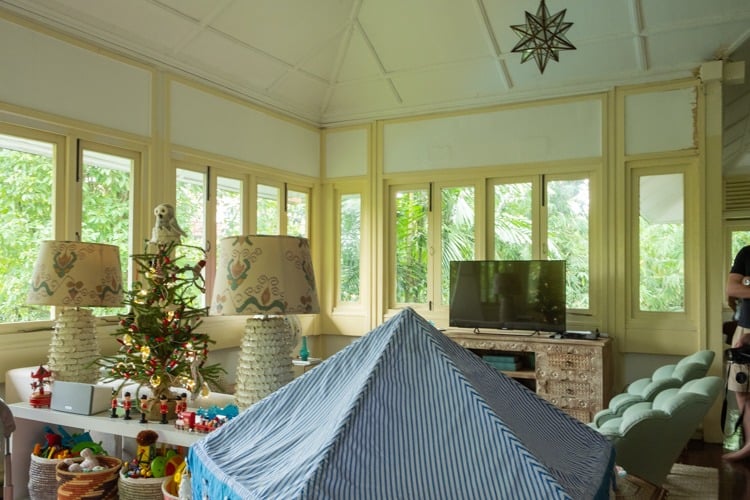
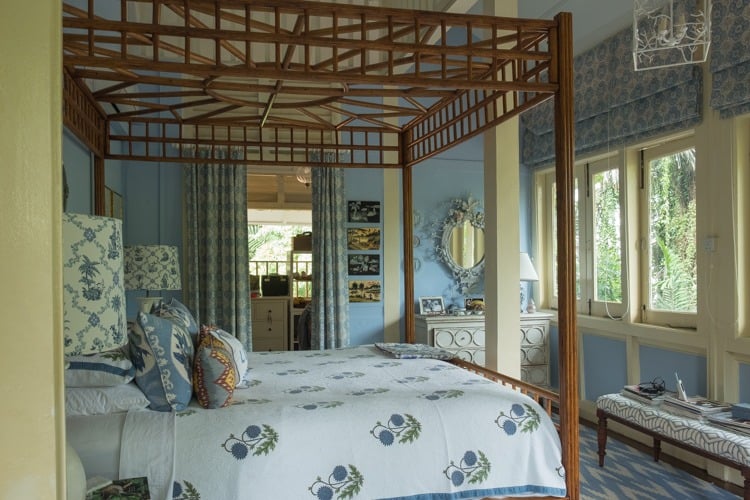

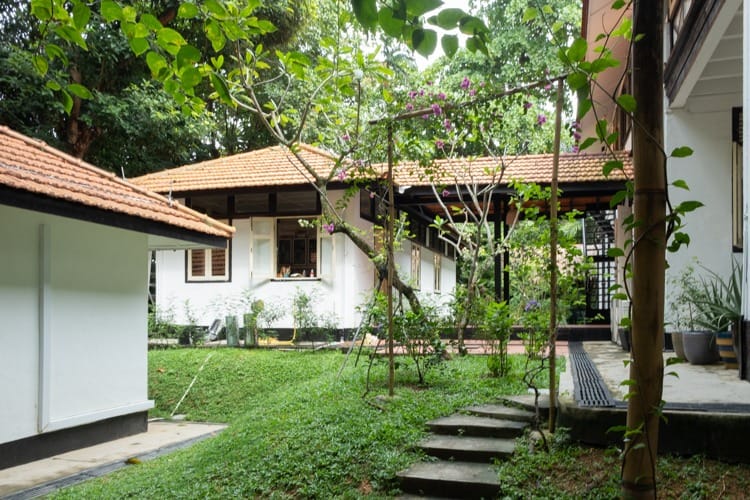
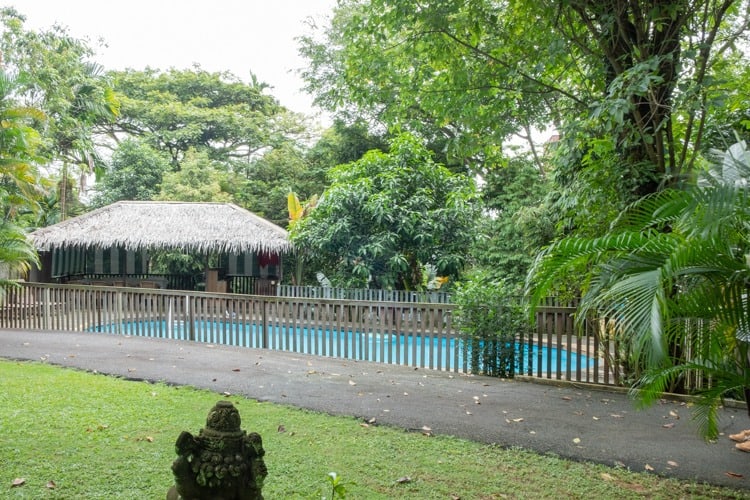

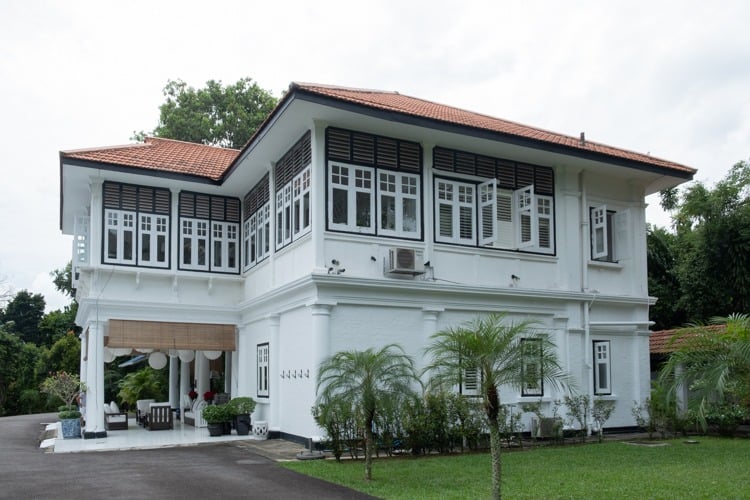
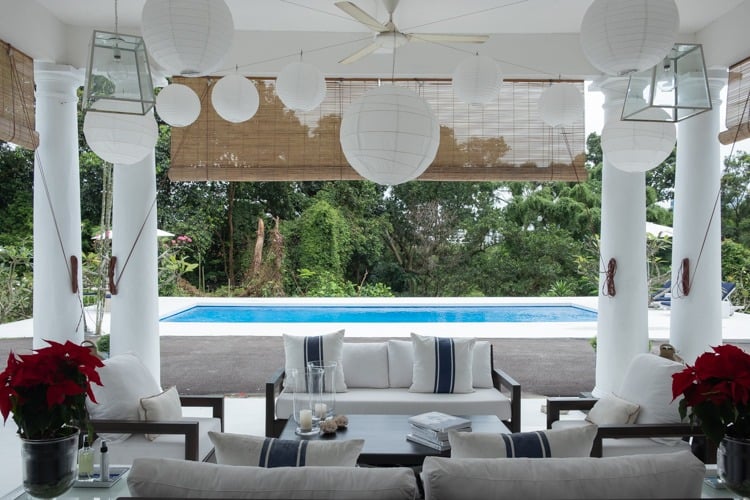
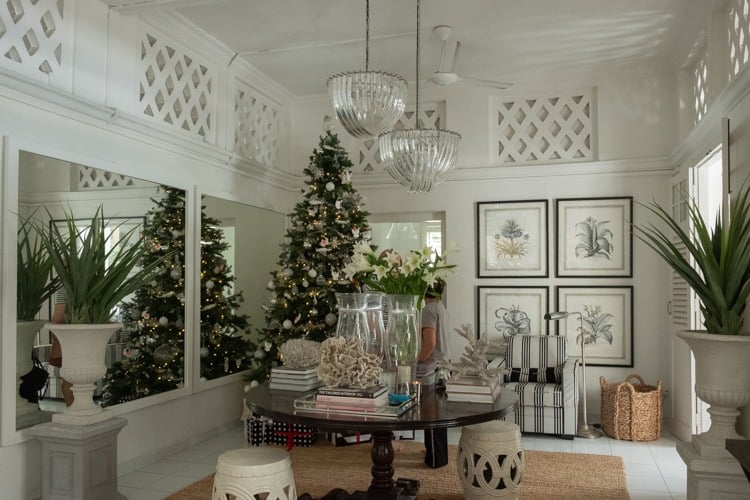
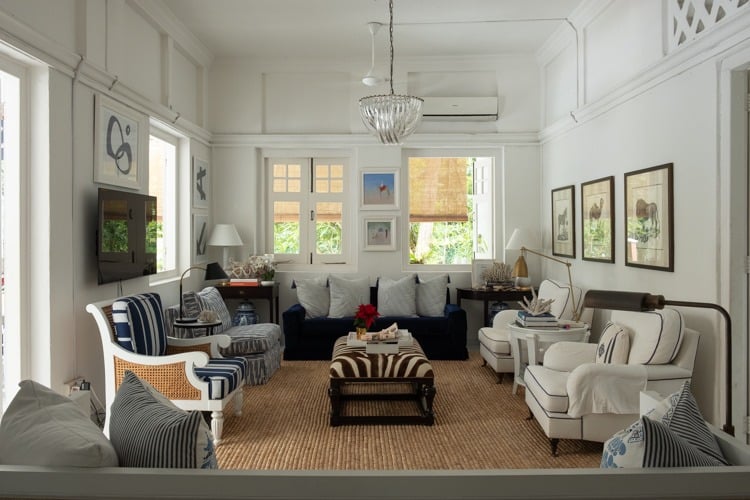

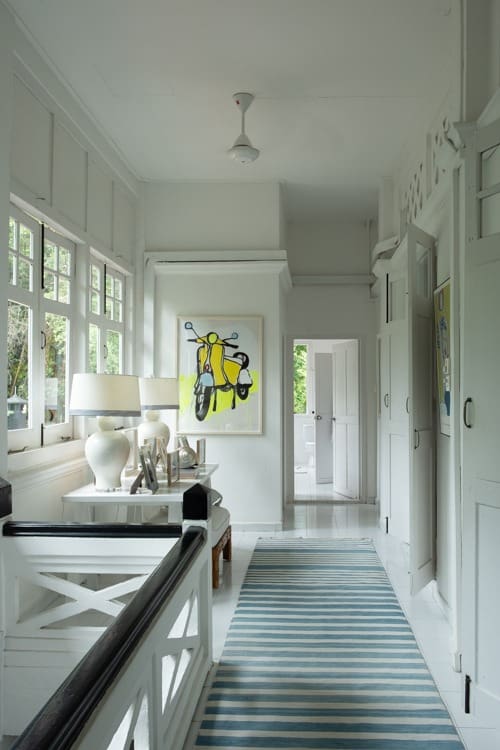


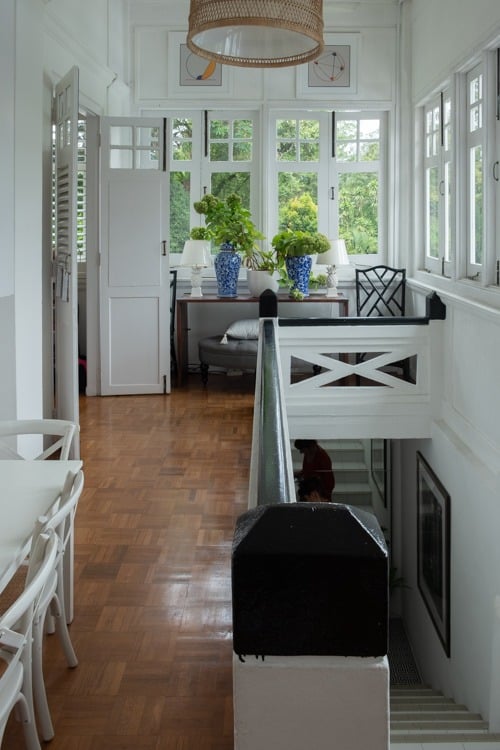
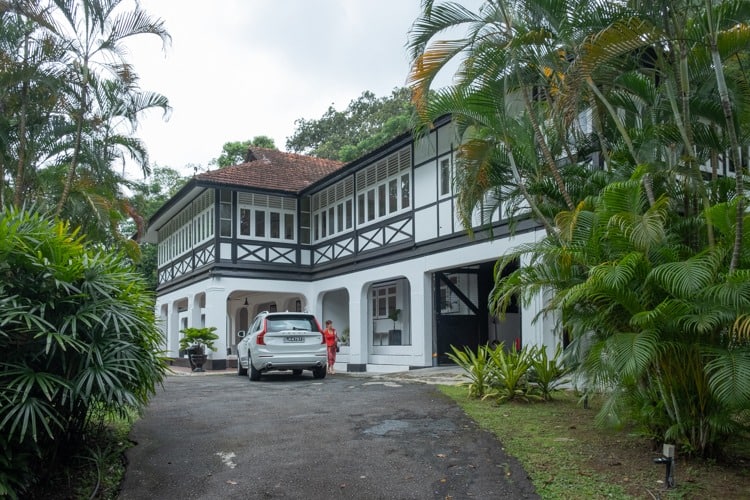
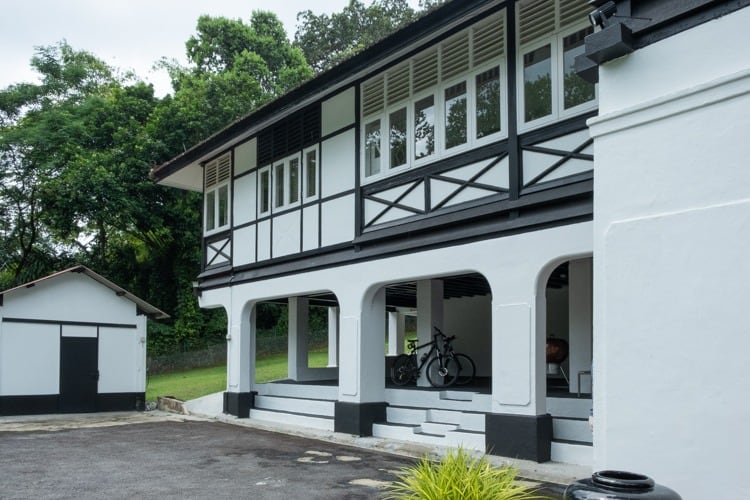










I’ve been to Singapore thrice but never heard that such tour existed! I haven’t been back to SG after reading the novel. I will allot money for this and try it! Would love to see the marvelous houses up close! 😀
The tour is more popular with expats than short-term visitors. I thought it was worth it.
I think the tour is just popular with expats, not tourists.
Love these houses. Just spent 10 weeks in Singapore. So much interesting history relative to the British.
It surprised me how much history and heritage Singapore has for such a short history.
You’re so lucky to have spent so long in Singapore! I agree that there’s so much history.
How lavish! I need a job with these kind of perks haha, sounds like a great tour!
It definitely was a great tour!
What stunning houses. I’m British and they definitely looked like home to me (I live in Mexico now so the sun and heat feel normal too).
I agree! They are stunning!
Hahahahaha the moment I saw your blog post, I was like, ooh the craftsman houses from Crazy Rich Asians! Glad to put some visuals to that description!
Good to know someone else remembered the houses from the book.
Are you kidding? These houses are gorgeous! I never would have thought these are in Singapore. Good to know they are available for rent. Maybe one day when I’m rich enough haha
I agree. They are gorgeous. Hopefully, one day!
I lived in Chong Pang 71-73, and my parents best friends who were higher up in rank lived in a black and white in Mt Faber. We would catch gekhos in tupperware containers downstairs while our parents played card games and drank rum and coke upstairs. ( seems so colonial now ). I would definitely do one of these (or two) on my next trip to Singers. Thanks for the great blog.
You are so lucky to have lived in Singapore and to have been in a black and white. I highly recommend the tour. It was definitely worth it.
We used to live in Singapore. Always admired the black and whites. Once I had the chance to visit one when a retiring British officer, a descendant of Francis Bacon, was leaving after 35 years and held an estate sale. Aren’t the roll-down blinds for the windows called chits? There was a near-riot over those.
I’m so glad you had a chance to visit a Black and White House. They truly are incredibly beautiful houses–one of the BEST things I did in Singapore.